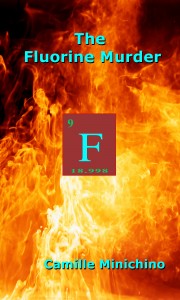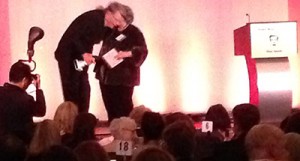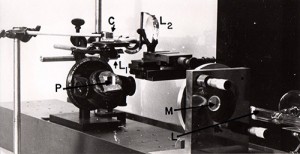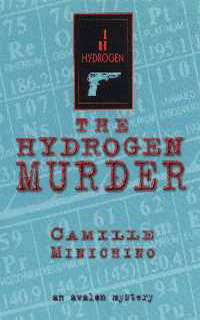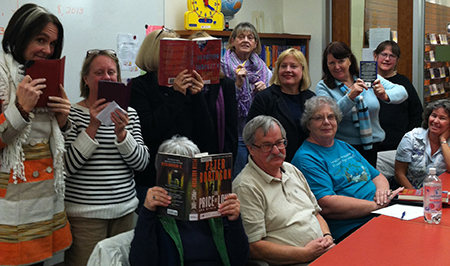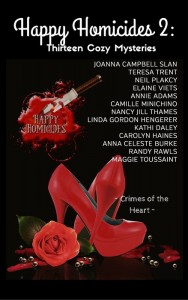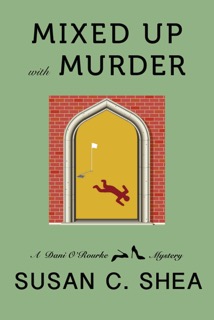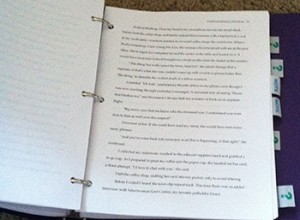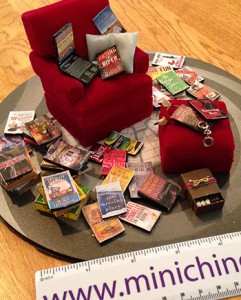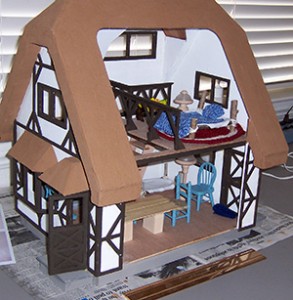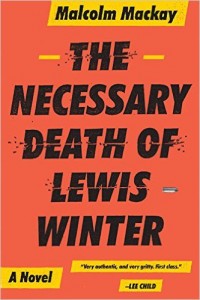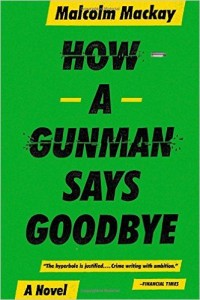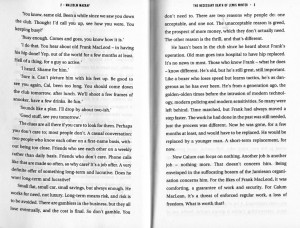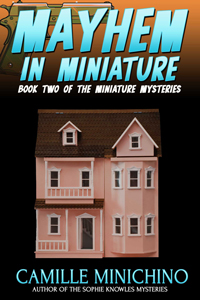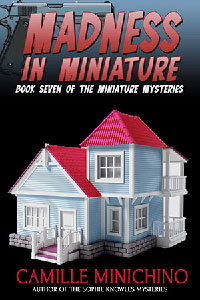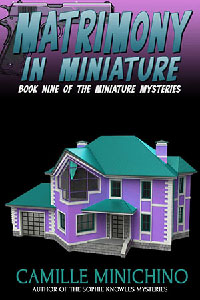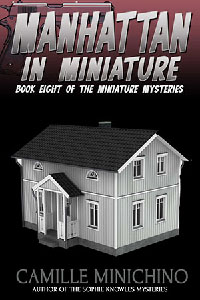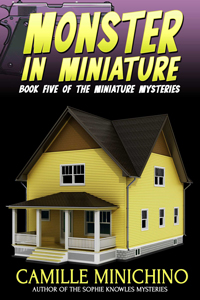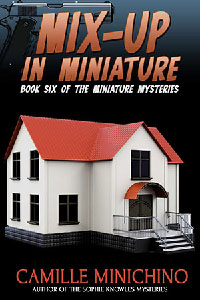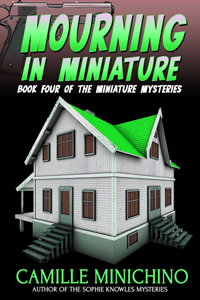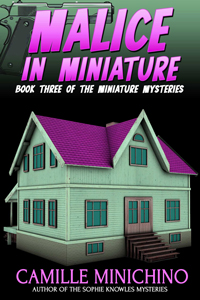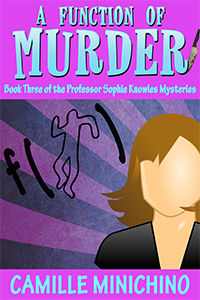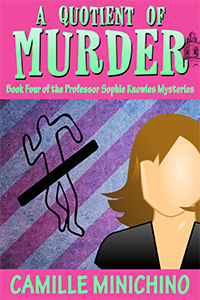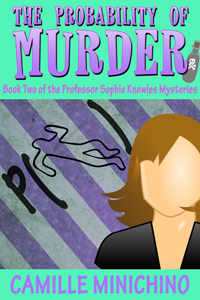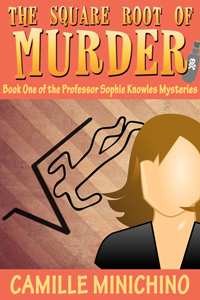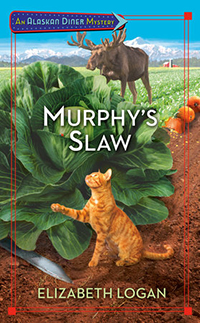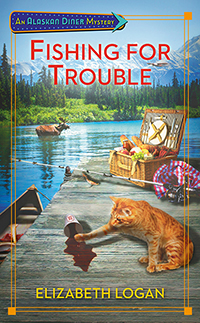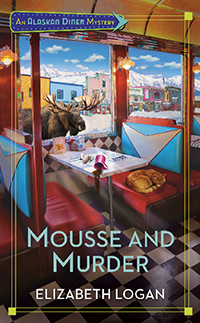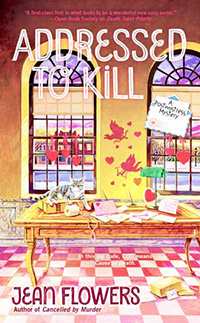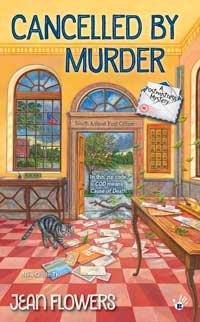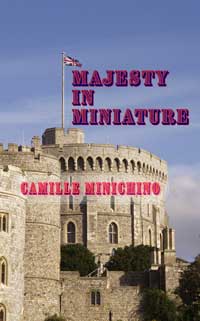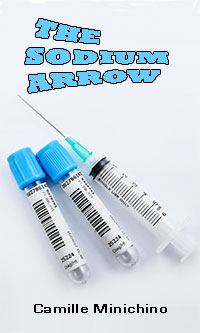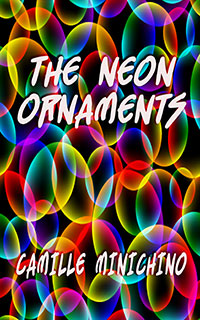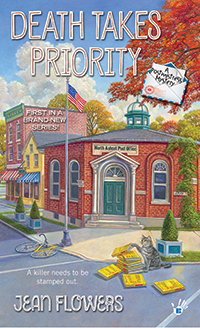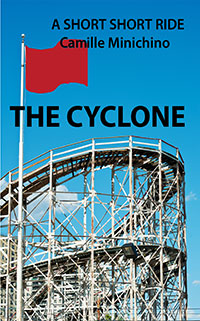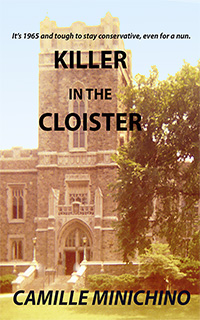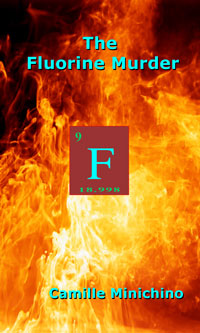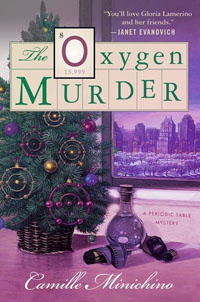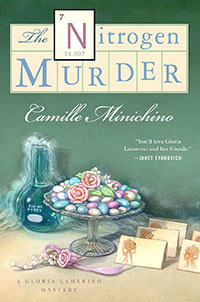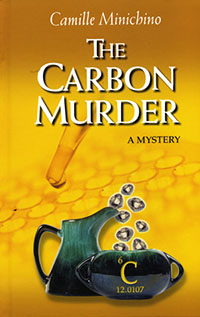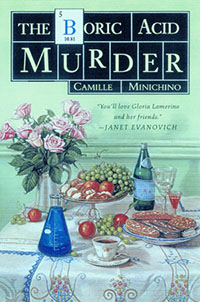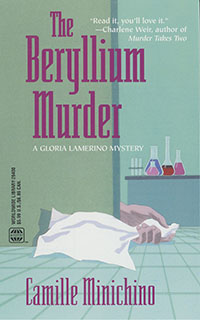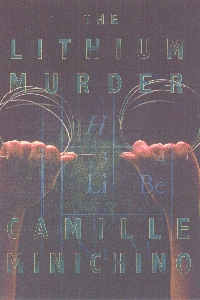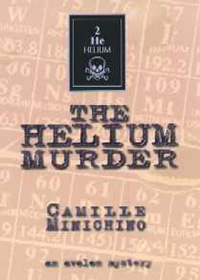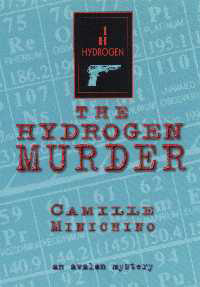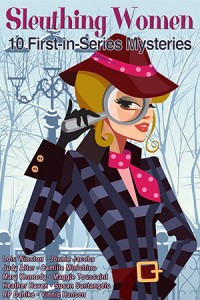 Which one of us do you think posed for the cover?
Which one of us do you think posed for the cover?
For your convenience, here’s a summary of all the books included in SLEUTHING WOMEN–10 FIRST-IN-SERIES MYSTERIES.
Sleuthing Women Mysteries is a 10-author anthology of first-in-series cozy mysteries, including my first, The Hydrogen Murder.
A short description of each of these full-length mysteries follows.
Assault With a Deadly Glue Gun, an Anastasia Pollack Crafting Mystery by Lois Winston—Working mom Anastasia is clueless about her husband’s gambling addiction until he permanently cashes in his chips and her comfortable middle-class life craps out. He leaves her with staggering debt, his communist mother, and a loan shark demanding $50,000. Then she’s accused of murder…
Murder Among Neighbors, a Kate Austen Suburban Mystery by Jonnie Jacobs — When Kate Austen’s socialite neighbor, Pepper Livingston, is murdered, Kate becomes involved in a sea of steamy secrets that bring her face to face with shocking truths—and handsome detective Michael Stone.
Skeleton in a Dead Space, a Kelly O’Connell Mystery by Judy Alter—Real estate isn’t a dangerous profession until Kelly O’Connell stumbles over a skeleton and runs into serial killers and cold-blooded murderers in a home being renovated in Fort Worth. Kelly barges through life trying to keep from angering her policeman boyfriend Mike and protect her two young daughters.
In for a Penny, a Cleopatra Jones Mystery by Maggie Toussaint—Accountant Cleo faces an unwanted hazard when her golf ball lands on a dead banker. The cops think her BFF shot him, so Cleo sets out to prove them wrong. She ventures into the dating world, wrangles her teens, adopts the victim’s dog, and tries to rein in her mom…until the killer puts a target on Cleo’s back.
The Hydrogen Murder, a Periodic Table Mystery by Camille Minichino—A retired physicist returns to her hometown of Revere, Massachusetts and moves into an apartment above her friends’ funeral home. When she signs on to help the Police Department with a science-related homicide, she doesn’t realize she may have hundreds of cases ahead of her.
Retirement Can Be Murder, A Baby Boomer Mystery by Susan Santangelo—Carol Andrews dreads her husband Jim’s upcoming retirement more than a root canal without Novocain. She can’t imagine anything worse than having an at-home husband with time on his hands and nothing to fill it—until Jim is suspected of murdering his retirement coach.
Dead Air, A Talk Radio Mystery by Mary Kennedy—Psychologist Maggie Walsh moves from NY to Florida to become the host of WYME’s On the Couch with Maggie Walsh. When her guest, New Age prophet Guru Sanjay Gingii, turns up dead, her new roommate Lark becomes the prime suspect. Maggie must prove Lark innocent while dealing with a killer who needs more than just therapy.
A Dead Red Cadillac, A Dead Red Mystery by RP Dahlke—When her vintage Cadillac is found tail-fins up in a nearby lake, the police ask aero-ag pilot Lalla Bains why an elderly widowed piano teacher is found strapped in the driver’s seat. Lalla confronts suspects, informants, cross-dressers, drug-running crop dusters, and a crazy Chihuahua on her quest to find the killer.
Murder is a Family Business, an Alvarez Family Murder Mystery by Heather Haven—Just because a man cheats on his wife and makes Danny DeVito look tall, dark and handsome, is that any reason to kill him? The reluctant and quirky PI, Lee Alvarez, has her work cut out for her when the man is murdered on her watch. Of all the nerve.
Murder, Honey, a Carol Sabala Mystery by Vinnie Hansen—When the head chef collapses into baker Carol Sabala’s cookie dough, she is thrust into her first murder investigation. Suspects abound at Archibald’s, the swanky Santa Cruz restaurant where Carol works. The head chef cut a swath of people who wanted him dead from ex-lovers to bitter rivals to greedy relatives.
Pre-order your copy now and it will be delivered on May 1st. Give this present to yourself and have plenty of fun reads on hand for all your summer vacations!
 Filed Under :
Filed Under :  Apr.28,2016
Apr.28,2016
